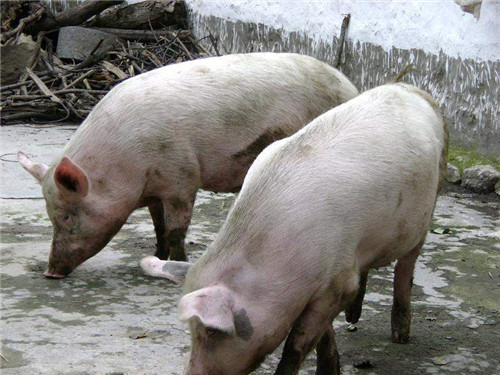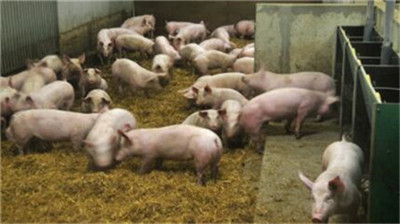Boar semen 30 questions (very authoritative), remember to collect after reading!
Guide reading
The quality of boar semen is directly related to the conception rate and litter size during estrus, so the pig farm cannot emphasize the importance of boar semen too much. The main purpose of writing this article is to correct some misconceptions. We know that the combination of high-quality sperm and eggs can give birth to new life, which in itself is a miracle of nature, so all people engaged in artificial insemination should have a kind of awe of life. I hope reading this article will increase your understanding of the artificial insemination process.
1. What is in the semen of a boar?
Boar semen is a sperm cell suspension secreted by the reproductive organs of boars, including accessory gonads. The liquid part of the suspension, called seminal plasma, helps to carry and protect sperm cells. Boar semen also contains a lot of gel.
two。 How long does it take for boar sperm to produce?
It takes about five weeks to produce a sperm cell, plus two weeks to stay in the epididymis, a long, swirling tube attached to the surface of the testis, where the sperm moves slowly, gradually matures and acquires potential fertilization capacity. The epididymis is also a major sperm storage site. As a result, the semen you collect that day is often generated seven weeks ago.
3. What does the sperm of a normal boar look like under a microscope?
The sperm of a normal boar contains a head and a tail, a bit like the tadpoles we see, and the whole sperm cell is covered with a septum. The head contains genetic information (chromosomes). At the top of the head is the acrosome. The acrosome is a cystic structure surrounded by a unit membrane, which is rich in enzymes. In the process of fertilization, it can help sperm pierce the egg. The tail contains the neck, middle, base and tail. The middle is rich in mitochondria, which produce the energy needed for sperm movement.
4. Which are abnormal sperm?
There are several kinds of abnormal sperm. For example, head deformities (fat head or shape deformities, etc.), tail deformities (double tails, curved tails, curly tails, etc.), acrosome defects (segmented, incomplete, etc.) and residual cytoplasmic droplets. Cytoplasmic droplets are formed during spermatogenesis and fall off after sperm maturation. Sometimes the cytoplasmic droplet does not fall off and remains at the proximal or distal end depending on its distance from the head.
5. How is the general abnormal sperm produced?
Some deformities are produced during spermatogenesis, that is, during testicular production, others are produced as sperm pass through the epididymis, and some may occur during or after ejaculation due to improper handling and storage. Different factors at each stage can lead to sperm deformities. For example, if a boar has a fever (elevated body temperature), this may affect spermatogenesis. Changes in temperature, pH or osmotic pressure during sperm dilution can lead to sperm deformities.
6. What does sperm deformity mean to artificial insemination?
Malformed sperm do not have the ability to reproduce, although some malformed sperm can reproduce according to the maturity of the sperm. Therefore, the sperm count in semen must take into account the percentage of malformed sperm (up to 30%).
7. How big is the sperm of a boar?
Normal sperm is about 45 microns (about 0.0045cm). To give you a rough calculation, if you connect sperm cells head to tail to form a string, you can string 220sperm cells into 1cm length.
8. Since the sperm is so small, how does it reach the egg? Does the sperm swim to the egg by its own power?
No! Considering that the sow's uterus has two uterine horns 1.5 meters long, it is impossible for such a small sperm to swim the whole journey. In the process of fertilization, it is mainly the uterine contraction of sows that causes the sperm to quickly reach the place of fertilization (where the sperm and the egg meet). This is why it is important to stimulate sows during fertilization. Once the sperm arrives at the fertilization site, the sperm's own motility is very important. Tail movement helps the sperm move to the egg and pushes the sperm's head into the egg.
9. How many sperm can reach the fertilization site each time?
In fact, only a small number of sperm can reach the fertilization site (perhaps less than 1%). After fertilization, it passes quickly through the uterus, and only about 10000 sperm reach the sperm storage part of the fallopian tube-most of which are countercurrent as they pass through the uterus, that is, they flow out of the cervix or are swallowed by sows' somatic cells. this phagocytosis occurs when the sow body is stimulated by a foreign substance. When ovulation occurs, sperm are slowly released from the storage area and move toward the fertilization site, in which fewer than 100 sperm survive.
10. Is sperm motility related to fecundity?
BillyFlowers's study in North Carolina confirmed that when boar sperm motility exceeds 60%, fecundity and litter size are no longer affected by sperm motility. As a result, most companies set a target of more than 70% for sperm motility.
11. Is there a single experiment that can accurately predict the fecundity of ejaculated semen from a single boar?
Unfortunately, no. At present, because of the deficiency in the maneuverability of the technology and the credibility of implementation, we can only evaluate several components of sperm quality, not all. However, if that component is not a limiting factor, then there is no necessary link between several aspects that we can assess and fecundity. For example, we can look at some components of sperm, such as the tail or head, to see if they are in normal shape, but we cannot guarantee that the sperm will function properly, or assess whether the chromosomes are in good condition. Just like a car, you can observe it and know if the tire is in good condition or in good shape. You can even try the headlights to see if they are working properly, but if you turn to the engine or drive, you can't be sure that it will take you to your destination. But if you see that the car has no tires, then you can be sure that the car is not good. This is also a problem with sperm.
We can see the sperm and know whether the quality of the sperm is poor, but we can't guarantee that the sperm is of high quality. We carefully observe each ejaculated semen before and after dilution to ensure that the sperm movement and morphology are normal, so that we can avoid using semen of poor quality, but we cannot predict fecundity based on semen quality.

twelve。 How much sperm does a normal boar ejaculate each time?
This is determined by several factors, such as the age of boars, and the frequency of semen collection is generally between 20 and 60 billion.
13. What's in the insemination bottle?
Semen: sperm and seminal plasma
Water mixture or diluent: this provides sperm nutrition and metabolic support, protects sperm from changes in ambient temperature and pH, inhibits bacterial growth and increases semen volume to a dose that can reproduce. It usually contains glucose, electrolytes, buffers and antibodies.
14. Is the sperm in the insemination bottle ready to combine with the egg?
No. Because it has not yet gone through a process called activation (the ability of sperm to gain fertilization), activation usually takes 6-8 hours for sperm to enter the sow.
15. How long can sperm survive in sows?
Usually, high-quality sperm can survive in the breeding site of sows for about 24 hours. The egg can only survive for 12 hours, so it is best to have the sperm reach the fertilization site before ovulation and can only let the sperm wait for the egg.
16. At what age do young boars begin to collect semen?
Puberty of boars begins at the age of 5.5 months, and sperm can be found in their semen. Once the boars are physiologically mature and can produce enough high-quality mature sperm, they can begin to train boars on the shelves, about 6-7 months old. Boars don't really mature until the age of 10 months.
17. How long is the preservation period of sperm in the insemination bottle?
It usually lasts 3-10 days, depending on the diluent you use and whether the semen is stored properly. Generally speaking, through a certain diluent, we guarantee a shelf life of at least 5 days.
18. How many sperm are there in a bottle of insemination? How do you know this?
The goal of artificial insemination is to have at least 2.3 billion sperm cells in each bottle. In order to achieve this value, each ejaculated semen is weighed and diluted according to the concentration of the sperm. The boar station attaches great importance to measuring the number of sperm in each semen to make the results as accurate as possible and fully mixed. As a result, there are an average of 2.3 billion sperm cells in all semen bottles.
19. Why do you need to shake the bottle twice a day in a 17-degree incubator?
If the bottle is not shaken, the sperm will precipitate at the bottom of the bottle. Therefore, it is necessary to shake so that the sperm can obtain nutrients and metabolites and redistribute them in the diluent.
20. Why keep boar semen away from the sun?
Because ultraviolet light (UV) in sunlight can damage or kill sperm. This is why semen must be placed in a box during transportation.
21. Why should semen be preserved at 17 ℃? What does it mean to be above or below this temperature?
The ideal sperm storage temperature is 17 ℃. If sperm are stored at high temperatures, such as 20 ℃, sperm activity is not sufficiently inhibited (which accelerates the use of nutrients and energy). As a result, the vitality of sperm will be reduced. In addition, there is a risk of bacterial breeding when the temperature is high. If the sperm is stored at 15 ℃, the protective membrane of the sperm, including the acrosome, may be damaged (you may not see this when you simply examine it under a microscope, because in this case, the movement of the sperm may not be affected. )
twenty-two。 How to measure the morphology of sperm? How often does it take to measure?
PIC stipulates that after each semen dilution, the morphology of sperm must be observed under a microscope and analyzed in detail every four weeks.
How does 23.PIC ensure semen quality?
PIC has a strict quality control system, including compliance with the British Pig Commission (BPEX) draft. We have our own quality control program. in addition, we send the samples to a third-party independent laboratory for evaluation. Veterinarians in independent laboratories inspect all populations once a week to assess not only the health of boars, but also whether sperm meet high quality standards.
24. Back-up boars are tested as breeding boars for commercial semen sales. How is PIC operated?
All new boars have to pass rigorous quality control tests, including morphology, motility and osmotic resistance tests (ORT, a special test used to assess the integrity of sperm membranes). Before reserve boars can be used as breeding boars, they must have all the semen produced several times in a row and pass the test.
25. Why does PIC GP sperm have color?
Is this bad for sperm? PIC uses some dyes in GP semen to make it easier to distinguish. These dyes and some materials that come into contact with sperm are non-toxic. They come from reliable manufacturers, and in addition, we conduct toxicity tests for each batch.
twenty-six。 Is sperm sterile?
No! Sperm cannot be sterile, it may contain bacteria. Bacteria may come from semen itself, sows, or from the environment. They are generally not pathogenic to sows, but if they exist in large numbers, they may affect sperm quality. This is why most diluents contain antibiotics and require storage at 17 °C, and special care must be taken during collection and handling to minimize bacterial contamination.
twenty-seven。 How can I make sure that sperm don't spread the disease?
At PIC, there are many ways to ensure that sperm do not spread disease. All boars from PIC Farm must be strictly monitored by the PIC Health Program. Ensure that the number of sources of each population is minimal and that all sources must be PRRS (blue ear disease) negative fields.
Semen collectors must conduct clinical observation every day to ensure that all boars eat normally and look good.
Take the boar's temperature once a day to detect any potential problems in time.
All populations must be certified by the European Union and undergo extensive serological tests, including brucellosis, classical swine fever and pseudorabies. PRRS is monitored through regular serological tests (at least once a month) and semen PCR tests (at least twice a month). PCR testing is expensive, but it has special advantages, which can detect the virus in time (serology looks for antibodies, and it takes 10-14 days to produce PRRS antibodies).
twenty-eight。 Can I mix the semen of different pigs?
Yes, yes, but to minimize health risks, PIC decided not to do so. So all the semen in your bottle comes from a single boar.
twenty-nine。 Why do we insist on using fresh semen instead of frozen semen?
Frozen pig semen is technically feasible, but it is not as effective as fresh semen; litter size and survival rate of newborn piglets are usually relatively low; in addition, there are large individual differences, that is, the semen quality of some boars seems to be higher than that of other boars. In addition, taking into account the technical level of most farms, frozen semen technology has not been applied commercially.
thirty。 When is it estimated that gender-specific semen will be available?
Sex-specific semen has become a reality in cattle production, but the production process is slow and expensive. We take into account that sows need more semen than cows, so it may take a long way to convert to commercial production. But you can look forward to it!
- Prev

Sow non-estrus treatment trick, remember to collect after reading!
Sow non-estrus treatment trick, remember to collect after reading!
- Next

The cause of sow second birth syndrome affects the economic benefits of this pig farm!
The cause of sow second birth syndrome affects the economic benefits of this pig farm!
Related
- On the eggshell is a badge full of pride. British Poultry Egg Market and Consumer observation
- British study: 72% of Britons are willing to buy native eggs raised by insects
- Guidelines for friendly egg production revised the increase of space in chicken sheds can not be forced to change feathers and lay eggs.
- Risk of delay in customs clearance Australia suspends lobster exports to China
- Pig semen-the Vector of virus Transmission (4)
- Pig semen-the Vector of virus Transmission (3)
- Five common causes of difficult control of classical swine fever in clinic and their countermeasures
- Foot-and-mouth disease is the most effective way to prevent it!
- PED is the number one killer of piglets and has to be guarded against in autumn and winter.
- What is "yellow fat pig"? Have you ever heard the pig collector talk about "yellow fat pig"?

